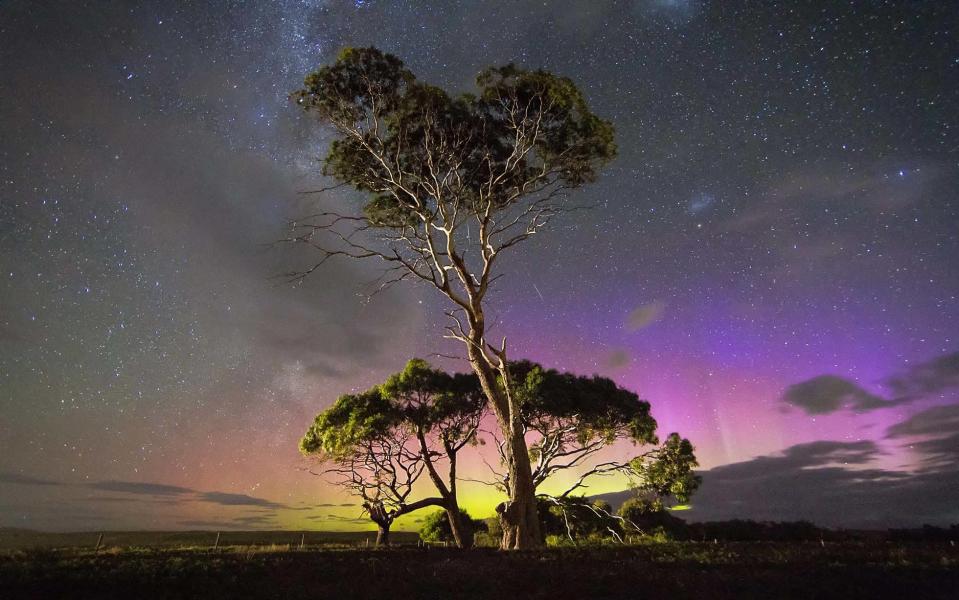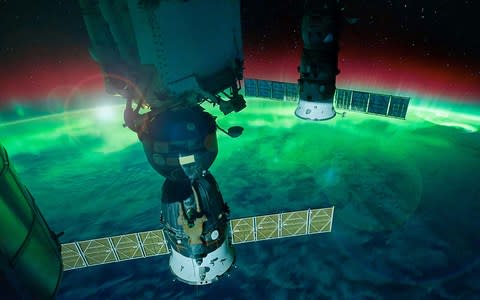Missed the Northern Lights this winter? Hunt the ‘Southern Lights’ instead

As the days get longer and milder temperatures descend on the Arctic Circle, the Northern Lights season draws to a close for another year.
However, this does not mean your chance of catching the Aurora in the coming months has grown any slimmer. You will just need to travel a bit further.
For the Southern Hemisphere has its own, considerably less-celebrated version of the Aurora Borealis: the Aurora Australis. Best viewed from Antarctica (bear with us), the Southern Lights can also be seen in New Zealand, Chile, Argentina and parts of southern Australia – and the season is just beginning.
Here’s everything you need to know about witnessing the celestial dance of the Southern Lights.
I thought you could only see the Northern Lights in the north?
The Aurora is actually just as powerful in the north as it is in the south. The light show is caused by electrically charged particles or 'solar wind', originating from the sun, which enter Earth’s upper atmosphere at high speeds.

While most of the particles (around 98 per cent) are deflected by Earth’s magnetic field, a small percentage of particles slip through and funnel towards the magnetic North and South poles. When the charged particles collide with oxygen and nitrogen atoms in our atmosphere, the show begins…
What do ‘Borealis’ and ‘Australis’ mean?
Aurora translates as “dawn” in Latin. Borealis means “northern” and Australis translates as “southern”. So the Aurora Australis is Latin for “southern dawn”. Quite poetic, really.
Why are the Northern Lights so much better known?
Take a look at a globe and you’ll see that there is much more land mass in the Northern Hemisphere at the latitudes where you can see the lights. In Europe the Aurora is visible in Norway, Finland, Sweden and Iceland. During strong solar activity, the lights have even been known to paint the skies of Scotland, northern England and Ireland. In 2016, the lights were seen as far south as Oxfordshire.
Elsewhere you can glimpse the display in Alaska, northern Canada, Russia and Greenland. An entire tourism industry has been built around viewing the Aurora Borealis – with some quite incredible hotel options available, if you want to do it in style.

Where can you see the Southern Lights?
The best place to visit the Aurora Australis is in Antarctica. However, assuming you have no plans of visiting the most inhospitable region on Earth any time soon, there are plenty of other options available.
One of the best places to see the Southern Lights is Stewart Island in New Zealand. Located off the southern tip of New Zealand, this sparsely populated island has little light pollution, making your chances of glimpsing the Aurora that bit more likely. There’s plenty of accommodation available here; consider staying around the Rakiura National Park – its name translates from Maori as “The Land of the Glowing Skies”, which is promising. (The fact that New Zealand's nickname is 'The Land of the Long White Cloud" is admittedly less promising.)
Another good bet is the Falkland Islands, an archipelago 400 miles off Argentina’s east coast, where scientists built an Aurora Australis monitoring system in 2010. If the lights don’t appear, there’s plenty more to keep you entertained here – penguins and elephant seals are in abundance.
In Australia, your best bet is to go as far south as possible – that means an expedition to Tasmania. Here, you’ll want to travel as far away from built-up areas as you can. Mount Wellington, Cradle Mountain, the Huon Valley, the Central Highlands and Bruny Island are all good bets for seeing the lights.
That said, you could get lucky elsewhere in Australia. During a particularly powerful period of solar activity in 2015, the Aurora was visible as far north as Uluru and Brisbane.
How is solar activity looking this year?
The Aurora-hunting calendar operates in eleven-or twelve-year cycles. Solar activity peaked in 2014 and is expected to reach minimum in 2020, before reaching maximum again around 2026. So the answer is, now is not the optimum time to see the lights. However, witnessing the Aurora is very much down to luck and there will be riotous displays even during this current low ebb, so don’t get too down-hearted by this.
When should I go?
You can theoretically see the Aurora Australis year-round, although your best bet of catching them is during the winter months in the Southern Hemisphere, between March and September, when the nights are long and cooler temperatures bring clearer skies. The best time to catch the Northern Lights is between November and March.
Are there any myths and legends surrounding the Aurora Australis?
Aboriginal traditions associate the Aurora with a range of themes including fire, death, blood and bad omens. To the Gunai people of eastern Victoria, they are seen as bushfires in the spirit world, offering a warning of a coming catastrophe. Some, however, believe that the Aurora is a sign of returning ancestors.
In Sweden, the Northern Lights were seen as a sign of good news to come, while Finnish Sámi people believed that the Aurora was a firefox whose tail was causing sparks to fly in the sky. In Japan, it was believed that all babies born underneath the Northern Lights would be blessed with good looks.
I'm sure I've heard of the 'Aurora Australis' somewhere else...
You may be thinking of the first ever book to be written, printed, bound and published in Antarctica – way back in 1909.

The book was written during the British Imperial Antarctic Expedition (or Nimrod Expedition) led by Sir Ernest Shackleton. Written entirely by members of the expedition, the book featured lithographs and etchings by crew-member George Marsten and bore an illustration of the Aurora on the cover.
The book, edited by Shackleton himself, was a creative project to ensure "the spectre known as 'polar ennui' never made its appearance" during the long winter. It's unknown exactly how many copies were produced – 70 have been accounted for to date.
How do I monitor Aurora Australis activity?
There is a website dedicated to serving this very purpose. The Aurora Service provides live updates on the strength of the Aurora. (At this very moment in time it is only penguins and Antarctic scientists enjoying a display of the Aurora Australis.)
